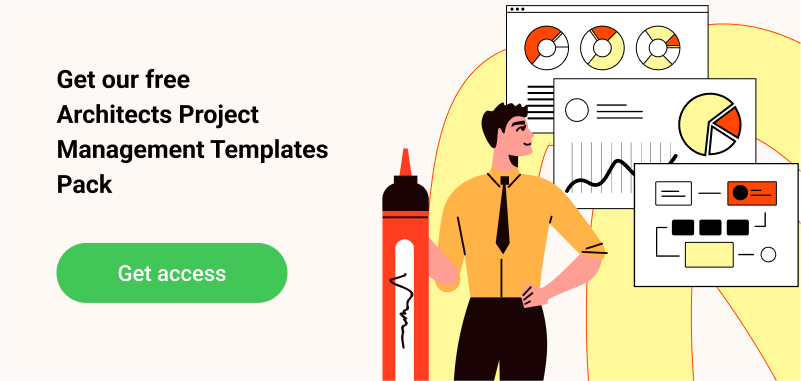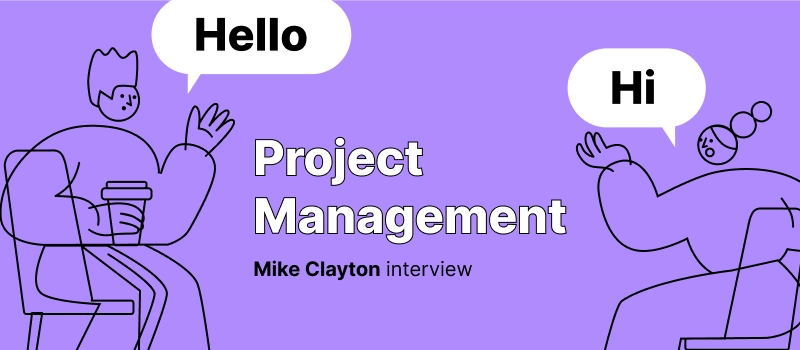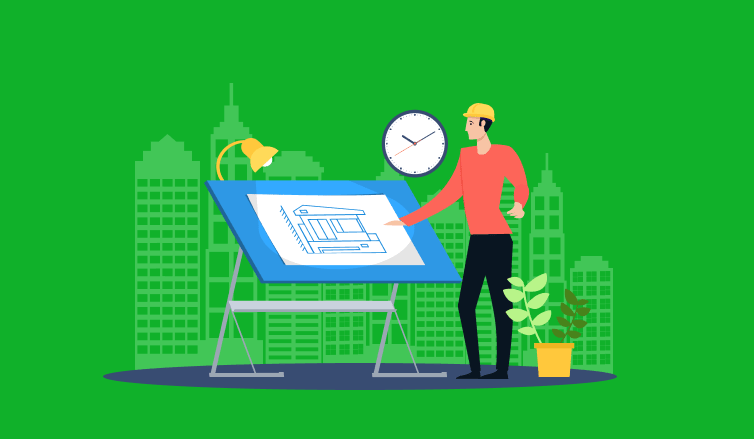
Complex architect projects demand both strong creativity and management skills. And such a combo is hard to achieve. People expect you to come up with a really elegant design solution, but they also expect you to do it in time, deal with all their small requests and adjustments, and stay on the same page with your team. All-night work sessions and sprints to fulfill their purpose on time are no stranger to any architect or engineer.
At the same time, there are a few simple time management techniques that will help you better structure your day, reduce the level of stress, and focus on the creative part of your work and relationships with clients instead of burning deadlines. Why not try some of them this week and see the difference in your work?
🧠 Plan in advance
As an architect, it can be a challenge to figure out where to begin. With all those details and nuances that need your attention each day, it’s easy to find yourself scattered and feeling unproductive.
To tackle all the diverse tasks you juggle and tame the chaos, you need to plan your workday in advance. That way, you know exactly what needs completing and in which order, which ultimately can spare lots of time.
So, when tomorrow arrives, make sure you have a nifty plan of attack ready and waiting.
🎯 Set achievable goals
There’s nothing worse than setting an impossible task, slogging away at it, only to realize that it was never actually achievable in the first place!
Being realistic with your goals keeps you on track and ensures those hard-earned hours aren’t going to waste. Thus, if you find yourself skipping from one unattainable dream to another, take a step back and make sure they’re within reach before downing tools.
🔝 Prioritize tasks
A great tip for architects looking to stay on top of their schedule is to write down all of the tasks that need to be done and then organize them based on importance.
One of the most effective methods to do that is by adopting Covey’s Time Management Matrix. This matrix allows architects to prioritize tasks as quadrants of urgent and important matters, important but not urgent issues, not important but urgent items, and non-urgent and non-important:
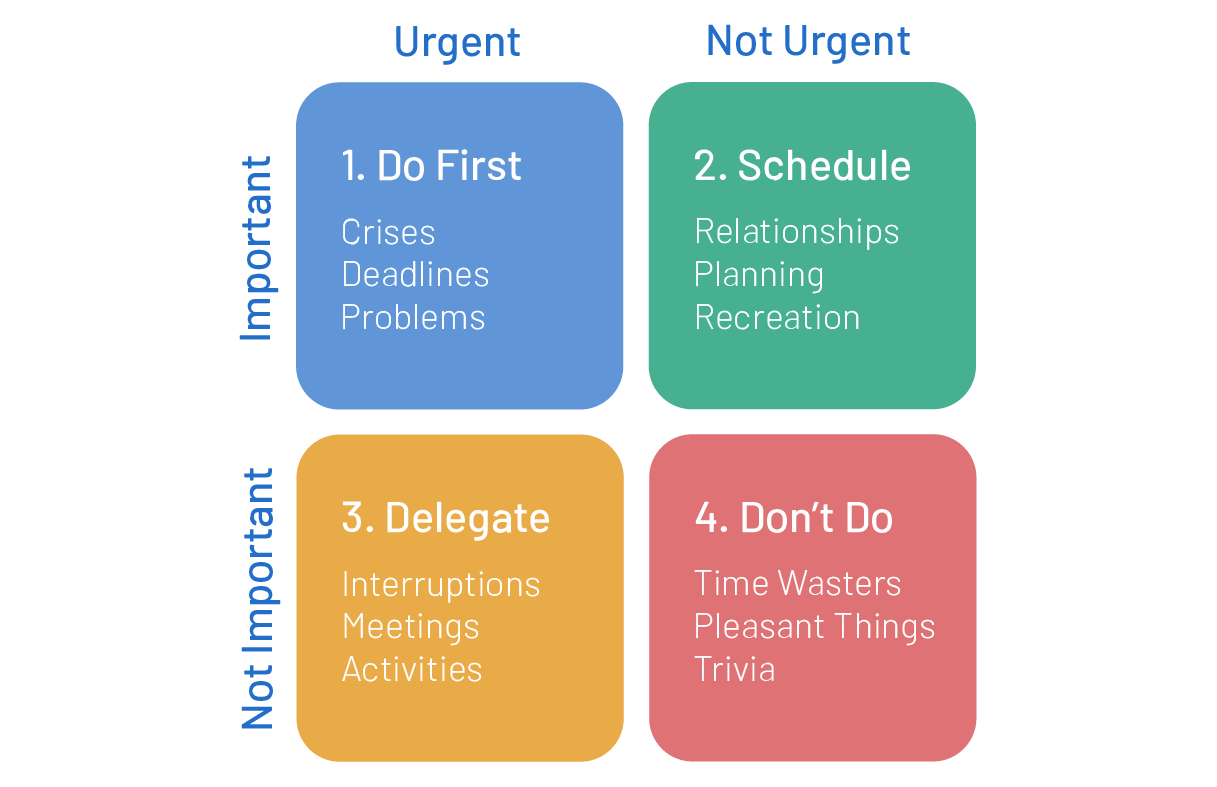
This strategy can help architects become proactive in completing their projects instead of feeling overwhelmed by a workload that may seem impossible to tackle. With this matrix, architects will be able to prioritize work by task urgency, dedicating more time and effort towards more pressing projects while managing less pressing tasks at their own pace.
🧨 Eliminate all distractions
Creative process is often connected with the special flow state that is easily lost when interrupted. You probably know very well that when you work on a complex architectural problem, you spend at least the first 15 minutes diving into the context of work. Then your brain starts processing different options, and truly creative solutions don’t come up until at least the first hour. Sometimes, it may even take a few days or weeks of “background” thinking to invent something that makes a difference.
That’s why it’s absolutely crucial to keep all distractions away from your workplace when you’re in the creative phase of work. Mark several hours in your daily schedule when you can’t be disturbed. Usually, early morning works great as your colleagues and clients typically have fewer requests this part of the day. If they do, give them a notice in advance that you’ll get back to them after some hours. Don’t pick up your phone unless this is a real emergency. Not to mention checking your email, social networks, and news sites. Stay focused on your main priority, and you’ll see immense progress within a few weeks of using this method.
📐 Estimate
For architects looking to stay organized, one fundamental time management trick is setting aside enough time for each task.
Estimating the amount of time that a project will need to reach completion can help keep it on track and ensure everything goes off without a hitch. Think of it as a kind of preventive maintenance: stopping a problem before it can become too big. Plus, meeting deadlines is something nobody ever regrets!
So, figure out how much time each task can take — give yourself enough time to get every job done properly instead of rushing around at the last minute trying to make everything work out. And who knows? You may even find yourself with some extra free time if you’re really smart about this!
🧱 Try time blocking
Very often, you may start working on finishing a project, and then you get an email from client that you start to answer right away. Then they demand to make an adjustment in drawings. This is a small adjustment, so you delegate it to an intern, but it turns out that she isn’t yet familiar with all features of your software, so you spend an extra half an hour showing it to her. Half of your workday is gone, and you still haven’t started what you were supposed to.
Instead, just as you did with creative work, you can dedicate regular time to all repetitive activities: answering clients’ emails, checking industry news and competitors’ activity, mentoring new colleagues, and running team meetings. For instance:
- Start by working a couple of morning hours uninterrupted on your project.
- Then, spend an hour answering all emails that you have and giving people estimates of when you’ll get back to them.
- After that, have an after-lunch hour to spend with your intern answering all their questions about all tasks and teaching her new skills.
Maybe some tasks will take slightly longer than if you rushed to do them right away. But deciding each time what you’ll do next is exhausting, so you save a lot of brain energy. And by the end of the day, you know exactly what you’ve completed.
🤖 Use productivity-boosting technology
Leveraging productivity-boosting technology can be an excellent way for those with a busy workflow to maximize their skill set and optimize their time management strategies. With so many unique digital tools available at our fingertips, it’s never been easier for architects to ensure their plans are followed through quickly and accurately.
But what kind of technology can help architects stay on top of their deadlines and make sure that there’s enough time for everything? The answer is simple: actiTIME!
Not only does it let you track your work progress in an efficient manner, but it also provides you with insightful analytics so you can better plan out future projects.
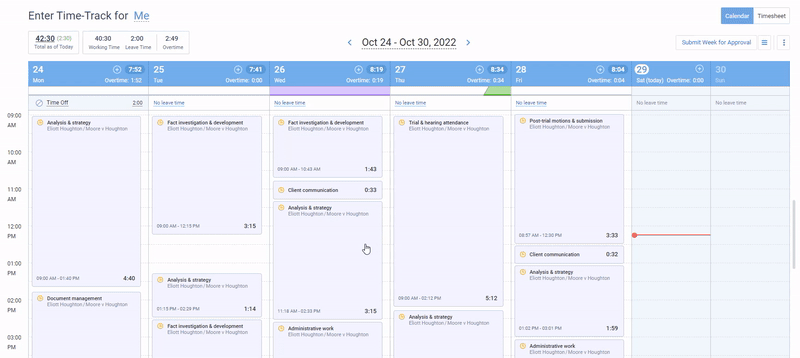
Want to breeze through the daily hustle and ensure that your projects have a well-defined plan? Sign up for a free actiTIME trial today.
🧩 Break down complex projects into smaller tasks
When you have far-reaching deadlines, overall progress gets lost out of sight. Complex architectural projects include many interdependent activities assigned to different people, and one delay or force majeure will affect the whole work, like the first piece in a line of falling dominoes.
An effective way to fight this problem is to break complex projects down into a number of smaller tasks, each with its own deadline. On regular weekly meetings, you can distribute the workload and discuss if there are any problems with current tasks. If anything goes behind the schedule, you’ll spot it in time and will be able to fix it with extra help from your colleagues.
🍵 Take regular breaks
Architects’ minds are constantly spinning with ideas on how to create spaces that evoke a feeling while being aesthetically pleasing. That kind of project demands a lot of focused energy and should be respected as such.
However, even the most dedicated worker needs some reprieve now and then. Taking regular breaks not only helps us to relax and clear our minds, but it can also help us stay effective in the long run.
If those little reminders to take a break seem hard to remember, try setting your phone timer or projecting a subtle motivational quote at your desk. After all, no genius work has ever been made while completely exhausted…and if you find yourself wanting more inspiration than just regular breaks can provide, why not try napping on the job?
Creativity can come in many forms, so don’t neglect rest — it could make all the difference!
🌱 Maintain a healthy work environment
Architect and construction design offices often foster an extremely workaholic environment. It’s usual to spend late nights in the office, answer emails at 2 AM, and skip vacation. Newcomers often feel obliged to follow this corporate culture, or they will be regarded as unenthusiastic.
While such an approach may give higher results in short term, ultimately, it leads to burnout, health problems, and toxic competition. As a result, you’ll have a higher turnover and spend time on searching for new employees.
To maintain your team’s spirit high for a long time, keep a good work-life balance for your colleagues:
- Rearrange workload so that none is overwhelmed with several urgent projects at the same time.
- Go home before 12 AM and encourage others to do so as well.
- Don’t answer work emails in the evenings and at night.
- Foster collaborative spirit when people know that they can take a day off to spend it with a sick kid because other colleagues will help them out.
Such work environment will reduce the level of stress and unnecessary competitiveness and will result in more efficient teamwork.
Conclusion
All in all, managing time well as an architect is key to success. With the tips and techniques outlined above, architects can better manage their working hours, stay organized, and be more productive in the workplace.
Want to see even better results at work? Start tracking your time today with a user-friendly tool like actiTIME!
With this state-of-the-art software, you can easily track your progress against budgeted hours and keep deadlines in check. Plus, actiTIME offers a rich reporting functionality that gives users insights into their performance – perfect for staying on top of project plans or analyzing your daily goals.










































